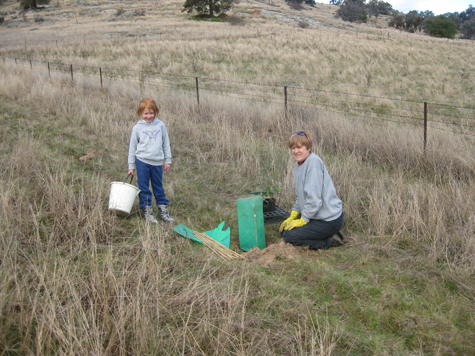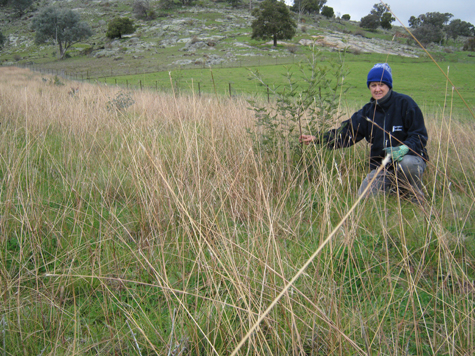Smaller areas of remnant vegetation (<0.2ha) will be fenced, revegetated and linked to establish new habitat corridors (approx 8 ha, 4km fencing) including stream frontage. Natural regeneration, through removal of grazing pressure, will be augmented by weed control (blackberries), soil erosion control, endemic tree / shrub tubestock (>2,000), direct seeding and paddock tree plantings (80). This is a hands-on project by Landcare members, farm neighbours and city based volunteers. NSW Dept of Lands photography and Phoenix mapping software is being used for our on/cross property planning. Regional landholders (30-50) will be invited to project field days.
Timber cutting, farmland clearing and grazing practice has left only pockets of remnant vegetation and quality wildlife habitat in our region. In a second phase of on-ground work commenced in 2011 by our landcare group members we will use cross property plans, linking smaller areas of remnant vegetation, replanting paddock trees and weed control to address local landcare issues and CfC targets:
- Protecting remnant vegetation and sensitive riverine environment,
- Establishment of cross property biodiversity and wildlife habitat corridors,
- Reduction of silt and salt load in the Lachlan River system,
- Improving the knowledge, skills and engagement of landholders, and
- Involving volunteer landcarers.
This project contributes to regional biodiversity, improved habitat for at risk species, and reduction of salt and silt loads in the Lachlan River system, the removal of blackberries (WoNS), other weeds and feral animal habitat. It builds on earlier work supported by CfC-CaG, NHT and LCMA funding.
This project was partially funded through a $20,000 Federal Government Community Action Grant and matching contributions from participating Group landholders.



